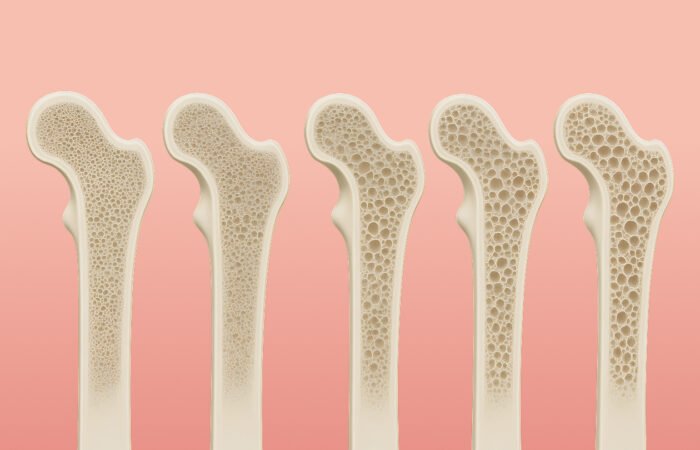
Midlife is a time of immense change for many women. If maintaining your weight and strength feels harder than it did in your 20s and 30s, you’re not alone. It’s not that your body is failing you; it’s simply evolving and asking for a different kind of support.
When it comes to muscles, they follow a simple rule: when active, they stay strong; when inactive, they tend to weaken. Midlife is when this becomes abundantly clear.
Starting in your 30s, both men and women naturally begin to lose muscle mass and strength, a gradual process called sarcopenia that can’t be fully prevented. By the time you reach your 50s, this process accelerates. Without regular training, adults can lose up to 10% of their muscle each decade. For women in midlife, hormonal shifts—especially the drop in estrogen—add another layer. These changes can further advance muscle loss, increase fat accumulation around the belly, and contribute to a slower metabolic rate.
Though this may feel discouraging, there’s good reason to be hopeful. Research shows that staying active can dramatically slow age-related muscle loss and strength decline. Strength training helps counteract these changes by: preserving muscle, building muscle mass, protecting mobility, and supporting long-term independence.
In this article, we’ll explain why strength training is essential for midlife health and share practical tips to help you start a routine that is effective and sustainable for your health goals.
What is strength training?
Strength training, also known as resistance or weight training, challenges your muscles to work against resistance, pushing them beyond their usual resting state. This creates tiny stresses in the muscle fibers, prompting your body to rebuild them stronger and more resilient.
Resistance can come from weights (which can be anything from dumbbells to anything heavy you have at home), machines, resistance bands, or your own body weight through exercises like squats and push-ups. They can all be adapted to suit different movements and fitness levels.
Benefits of strength training
Strength training doesn’t just build and preserve muscle, it also has many other important benefits, especially for midlife women, including:
- Boosting metabolism: When you strength train, your body works harder and thus requires more energy. Metabolism is the process your body uses to convert food into energy to keep you alive and energized. Because muscle burns more energy at rest than fat tissue; increasing your muscle mass boosts your resting metabolic rate. Simply put, the more muscle you have, the more calories your body burns throughout the day, even when you’re not moving. These additional calories burned mainly come from fat, which helps improve body composition by reducing overall body fat percentage.
- Increase cardiorespiratory function: When done consistently, it can help counter some of the metabolic changes that come with lower estrogen levels. It supports heart health by raising HDL (the “good” cholesterol), lowering LDL, triglycerides, and fibrinogen, while also reducing the risk of high blood pressure, heart attacks, and strokes.
- Improving bone density: Resistance exercises stimulate, nurture, and protect bones. This helps reduce the risk of osteoporosis, a disease that weakens bones and increases their likelihood of them breaking. They also combat the natural loss of bone density associated with the menopause transition. Stronger muscles and bones can reduce fall risk and likelihood of serious injury if a fall does occur, a very real concern as one ages.
- Supporting joint health: A joint is where two bones meet, like your elbow, shoulder, hip, and knee. Muscles surrounding a joint act dynamically to stabilize movement and reduce strain. Meaning, strong muscles surrounding your joints serve as natural shock absorbers that contribute to enhanced stiffness and stability, which may even help relieve pain and discomfort. In addition, increased blood flow to certain joints ensures essential nutrients and oxygen reach tissues to support maintenance and repair.
- Enhanced insulin sensitivity: Insulin acts like a key, unlocking your cells so sugar (glucose) can move from your blood into your cells for energy. This helps keep blood sugar in check and protects against weight gain, fatigue, and type 2 diabetes. While the exact mechanisms aren’t fully understood, research suggests that strength training—and the muscle growth it triggers—may improve insulin sensitivity. More muscle means more room to store sugar and a smoother, more efficient uptake.
- Improved mental health and cognitive resilience: Strength training has consistently been reported as an effective type of exercise for bettering symptoms of anxiety and depression. It may also improve self-esteem, body image, and sleep, all of which play key roles in mental well-being.
How strength training fits into the bigger picture
Strength training is just one piece of the puzzle. A balanced approach to physical exercise for menopausal women may also include:
- Higher-impact or cardio exercises – These get your heart rate up and support cardiovascular health, bone density, and mood. Examples include brisk walking, jogging, dancing, jumping rope, certain sports, or high-intensity interval training (HIIT).
- Low-impact, joint-friendly activities – These are easier on your joints while still supporting bone and muscle strength. Think low-impact aerobics, using the elliptical, hiking, climbing stairs, or water-based activities like swimming.
- Flexibility, balance, and mobility work – These help prevent injury, support posture, and improve everyday movement. Great options include yoga, stretching, tai chi, or pilates.
Foundational tips for getting started
Note: Before starting a strength training program, especially if you have a chronic condition or are over 40 and haven’t been active recently, consult a healthcare professional.
When getting started, try and implement these simple practices:
✓ Five to 10 minutes of aerobic activity as a warm-up (e.g.; walking, jogging, jumping jacks). Warm muscles with good blood flow are less prone to injury than cold muscles.
✓ Select a weight that enables you to do 12-15 reps before feeling fatigued. When that becomes easy, increase the weight slightly. Aim to exercise all major muscle groups at least twice a week.
✓ Let your body adjust to the increased load. Rest at least one day between exercising the same muscle group.
✓ Find videos online for simple exercises and routines, focus on proper technique over intensity in the beginning. Here is a great resource to start.
✓ Be mindful of your workout intensity by using the talk test: if you can sing, it’s light; if you can talk but not sing, it’s moderate; if you can barely speak, it’s high. This simple check helps you stay in tune with your body and adjust effort as needed.
✓ Cool down at the end of your workout with a short walk and some simple stretches. Take this as an opportunity to reflect on what you accomplished. Real progress comes from being gentle with yourself and consistent with your plan.
Tips for making strength training sustainable
- Fit strength training into small pockets of time, like squats while brushing your teeth or quick bodyweight moves during downtime. Keep it simple and practical.
- You don’t need a gym membership to get started, there are countless free beginner-friendly online routines that let you work out anywhere. With Coral, our coaches provide personalized fitness plans, expert guidance, and ongoing support tailored to your goals.
- Pair workouts with existing habits, like before your morning coffee or between meetings, to build consistency without extra stress.
- Get others involved for motivation. A workout with friends, family, or colleagues can make it fun and keep you accountable.
- Try to schedule your sessions like important meetings. Even 15 minutes regularly can make a big difference when it’s a non-negotiable part of your week.
For midlife women, lifting weights isn’t all about building big muscles; rather, it’s about proactively responding to your body’s changing needs. Over time, with consistency, strength training becomes less of a chore and more of a habit that fuels your energy, resilience, and overall well-being through midlife and beyond.
Disclaimer: The information provided here is for informational purposes only. It is not intended as medical advice. Always consult with your doctor or healthcare provider to determine what is best for your individual health needs.
References:
- References:
- Arthritis Foundation. 8 Ways Exercise Helps Your Joints | Arthritis Foundation. www.arthritis.org. https://www.arthritis.org/health-wellness/healthy-living/physical-activity/getting-started/8-ways-exercise-helps-joints
- Cleveland Clinic. Sarcopenia (Muscle Loss): Symptoms & Causes. Cleveland Clinic. Published 2022. https://my.clevelandclinic.org/health/diseases/23167-sarcopenia
- Cunha PM, Werneck AO, Santos L dos, et al. Can resistance training improve mental health outcomes in older adults? A systematic review and meta-analysis of randomized controlled trials. Psychiatry Research. 2024;333:115746. doi:https://doi.org/10.1016/j.psychres.2024.115746
- Eduard Isenmann, Kaluza D, Havers T, et al. Resistance training alters body composition in middle-aged women depending on menopause – A 20-week control trial. BMC Women’s Health. 2023;23(1). doi:https://doi.org/10.1186/s12905-023-02671-y
- Hong AR, Kim SW. Effects of Resistance Exercise on Bone Health. Endocrinology and Metabolism. 2018;33(4):435. doi:https://doi.org/10.3803/enm.2018.33.4.435
- Jiahao L, Jiajin L, Yifan L. Effects of resistance training on insulin sensitivity in the elderly: A meta-analysis of randomized controlled trials. Journal of Exercise Science & Fitness. 2021;19(4):241-251. doi:https://doi.org/10.1016/j.jesf.2021.08.002
- Mayo Clinic Staff. Strength training: Get stronger, leaner, healthier. Mayo Clinic. Published April 29, 2023. https://www.mayoclinic.org/healthy-lifestyle/fitness/in-depth/strength-training/art-20046670
- Mishra N, Devanshi, Mishra V. Exercise beyond menopause: Dos and don′ts. Journal of Mid-life Health. 2011;2(2):51. doi:https://doi.org/10.4103/0976-7800.92524
- National Institute on Aging. How can strength training build healthier bodies as we age? National Institute on Aging. Published June 30, 2022. https://www.nia.nih.gov/news/how-can-strength-training-build-healthier-bodies-we-age
- Niemann MJ, Tucker LA, Bailey BW, Davidson LE. Strength Training and Insulin Resistance: The Mediating Role of Body Composition. Journal of Diabetes Research. 2020;2020:1-11. doi:https://doi.org/10.1155/2020/7694825-e737. doi:https://doi.org/10.1016/S2665-9913(22)00218-1




